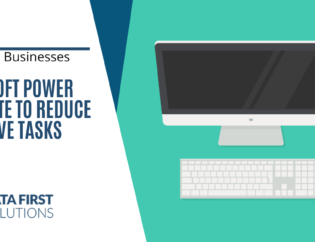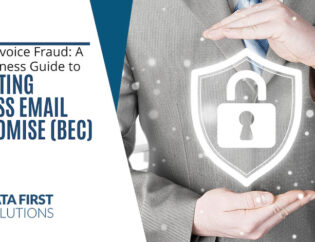
Secure IT Asset Disposition (ITAD) involves more than just discarding electronic waste and is instead a disciplined approach to retiring outdated IT assets. This makes it part of proper IT asset management at the end of life, meant to safeguard your business’s sensitive data and information. Additionally, it can serve as a means of recovering value and supporting sustainability goals.
The Importance of Secure ITAD
Every electronic device ever used in your business contains a digital footprint. For instance, computers and phones handle and store client data, financial records, and other proprietary information. Simply deleting files or formatting drives does not make this data unrecoverable. Sophisticated data recovery techniques can easily restore improperly erased data, and a data breach from discarded equipment could devastate a small business.
The consequences of such a breach extend far beyond immediate financial loss. Your company’s reputation and client trust also suffer irreparable damage. It is worth noting that Canadian businesses are required to comply with several privacy laws, such as the Personal Information Protection and Electronic Documents Act (PIPEDA), which requires customer personal information to be protected throughout its entire lifecycle, from collection to disposal. In this regard, secure data disposition is not an option, but a legal requirement for responsible operations.
The risks also include environmental responsibility and liability since electronics contain hazardous materials such as mercury and lead. Simply tossing electronic waste into a landfill could violate provincial and federal environmental regulations, as well as international laws and treaties such as the Basel Convention. Proper e-waste recycling ensures that these toxins are handled safely and contributes to the circular economy by recovering valuable materials such as gold and silver for use in new products.
Building Your Secure ITAD Process
A robust ITAD process follows a well-strategized, planned, and documented path. It begins when the equipment is still within your company’s control, where you must create a complete inventory of all IT assets to be retired. The rule of thumb here is to document every device’s make, model, and serial number for accurate tracking.
The next step is securing transportation to a certified processing facility, and your ITAD provider of choice should use tracked logistics and have a clear chain of custody. Once the assets arrive at the provider’s facility, certified technicians use advanced software and hardware tools to perform systematic data destruction. There are multiple steps in the ITAD process, including:
- Digital Sanitization: This process utilizes special software that overwrites the existing data multiple times with meaningless data.
- Physical Destruction: Storage media such as hard drives that cannot be refurbished are shredded into unrecoverable pieces.
- Component Recycling: The shredded materials are separated for responsible reprocessing, which could involve either disposal or recycling.
- Asset Remarketing: Functional equipment that has undergone successful digital sanitization is refurbished and resold.
At every step of this process, your ITAD provider should provide transparent reporting, and at the end of it all, they should give you Certificates of Destruction and Recycling for use in audit trails and as legal proof of due diligence when compliance questions arise later.
Selecting the Right ITAD Partner in Canada
Choosing a qualified ITAD provider requires careful vetting. Ensure that your chosen provider has deep knowledge of Canadian privacy regulations, such as PIPEDA and other relevant provincial laws. The best partners are those that maintain detailed audit trails for all assets, since this documentation is important for compliance reviews and security audits.
Since transparency is the hallmark of a quality operator, ask potential ITAD providers for references from similar businesses. A reputable company will not hesitate to show you documentation or connect you with satisfied clients. Ultimately, the right ITAD provider will feel like an extension of your own team.
Finally, do not make decisions based on price alone. Sometimes, the cheapest option can be the most expensive, since it might cut corners on security and environmental compliance. Furthermore, the costs of a single data breach far outweigh the investment in proper IT Asset Disposition. Protecting your business is worth selecting an ITAD partner such as Data First Solutions Canada, which will do the job the right way.
Turning ITAD From a Cost into an Advantage
Many business owners tend to view IT asset disposal as an expense or even a loss since they are getting rid of equipment and still paying someone to do it properly. However, this perspective misses the significant value and risk reduction provided by proper ITAD management. It not only saves money by preventing costly data breaches and regulatory fines, but refurbishment and resale programs can also generate unexpected revenue from retired assets.
The greatest value, however, comes from peace of mind. With proper ITAD measures in place, you can focus on growing your business without worrying about the hidden risks. Secure disposition responsibly completes the technology lifecycle and also demonstrates to your clients and partners that you take data security seriously.
Start by assessing your current IT asset inventory for equipment that is ready for retirement and develop a simple internal policy to guide your team, because building a secure ITAD process is one of the smartest investments you can make.
Ready to develop a secure ITAD strategy? Contact us for a tailored assessment of your business needs. You can also call (416) 412-0576 to speak with our team about creating a customized plan that safeguards your data and aligns with Canadian compliance standards.






